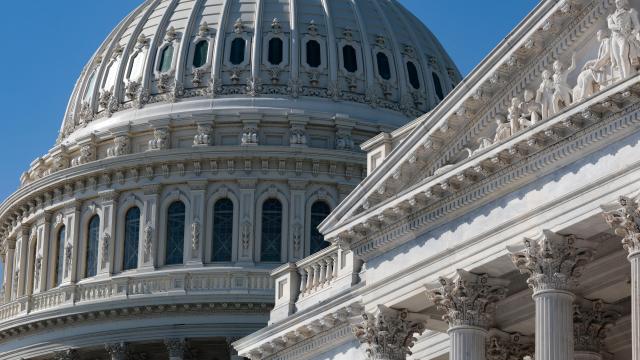Just $US1 ($1) billion has been allocated for international climate finance in the latest federal spending bill — a far cry from the $US11 ($15) billion a year President Biden had promised to other world leaders. It’s also just $US387 ($537) million more than the Trump administration put towards similar causes last year, according to calculations from the World Resources Institute.
Climate change exacerbates injustices: some of the countries that have started to face the most extreme impacts of climate change are also the least able to adjust and adapt to these massive changes. The Paris Agreement mandates that wealthier countries need to start paying for their historical emissions and helping less developed countries financially. One analysis estimates that the U.S. should actually be chipping in up to $US50 ($69) billion each year in aid given its massive economy and influence on historic emissions.
“It’s a justice issue,” said Joe Thwaites, an associate in the Sustainable Finance Centre at the World Resources Institute. “Developing countries have done generally the least to cause climate change, and yet they’re hit first and worst by the impacts.”
The world has been trying to fix this injustice for a while: back in 2009, the world’s wealthiest countries promised to start giving more money to help other countries in need, promising to hit a goal of giving a total $US100 ($139) billion each year in climate finance by 2020. But developed countries have lagged far behind reaching that goal — they’re currently on track to reach that number by 2023, three years behind schedule. Meanwhile, the U.S. took a big pause on giving money at all during the Trump administration, which significantly cut back its contributions. (Trump isn’t exactly an outlier in throwing little cash at the problem: former President Barack Obama only managed to give $US1 ($1) billion of the $US3 ($4) billion he promised while in office.)
A billion dollars may seem like a lot to give to other countries. But since taking office, the Biden administration has prioritised climate action. In September, Biden told the UN General Assembly that his administration would begin delivering $US11 ($15).4 billion each year in climate aid by 2024. At COP26 this fall, U.S. lawmakers continually touted the U.S.’s return to leadership on the diplomatic stage, while Special Envoy for Climate John Kerry rallied other countries to chip in more money, projecting that the $US100 ($139) billion number could be reached by this year. (Countries aren’t exactly hurting for cash: seven of the world’s largest historic emitters, one study found, spend on average 2.3 times more militarizing their borders than they do on climate.)
“I was surprised and disappointed this year, partially because they talked it up so much,” Thwaites said. “The Biden administration and congressional leadership on the Democratic side have spent the year talking about U.S. climate leadership and how the U.S. is back.”
At first, Thwaites said, draft proposals of the spending bill looked more promising: the White House originally proposed $US2.5 ($3) billion in aid, the House suggested $US2.8 ($4) billion and the Senate requested $US3 ($4).1 billion. Those amounts weren’t exactly at the full $US11 ($15).4 suggested by the Biden administration, but, Thwaites said, these early signs showed that finance “was going to start to ramp up on a pathway that could get there.”
Unfortunately, these numbers were part of a larger casualty in spending in the budget on international affairs, which increased a fraction of the amount compared to other types of spending.
“The administration has been putting effort into getting these numbers up, but they could be prioritising it more,” he said. “But from congressional leadership — the sign that it sends is that they were willing to put in a decent amount early on in the negotiations, but when it came crunch time they traded it off.”
Climate finance isn’t just a moral issue: it’s imperative to helping other countries prepare and survive climate change, and fits in historically with other investments the U.S. has made abroad. And if the U.S. wants to be a climate leader, it needs to start catching up now. The EU contributed a total of 23.39 billion Euros (around $US25.6 ($36) billion) in climate finance in 2020, with an economy smaller than that of the U.S.
“It’s disappointing to other developed countries that have essentially been holding the can for the last four years and waiting for the U.S. to return and start contributing a decent amount,” Thwaites said. “They had all these assurances from the administration, and then it fell through.”
